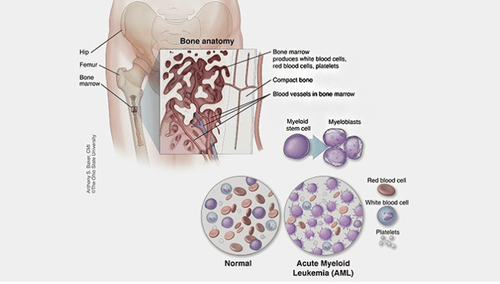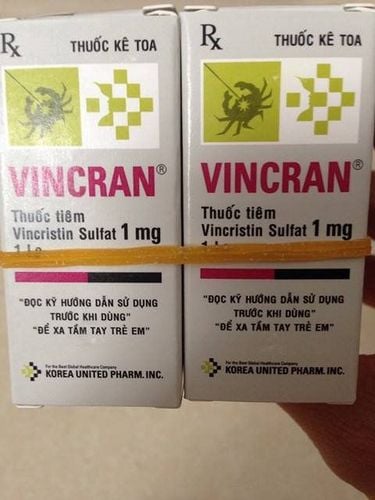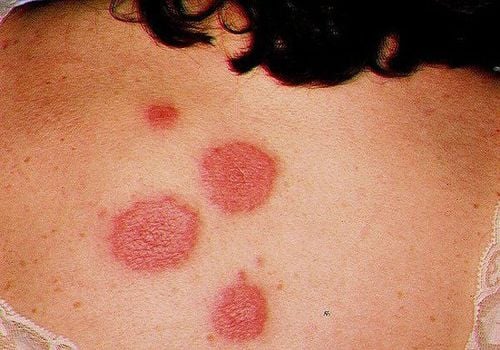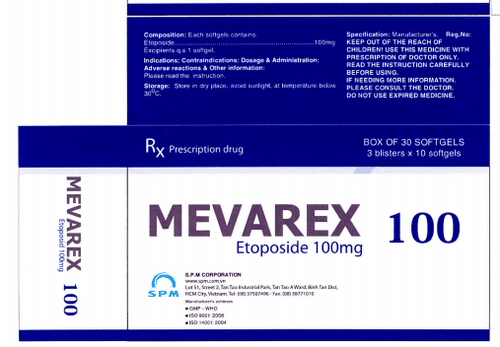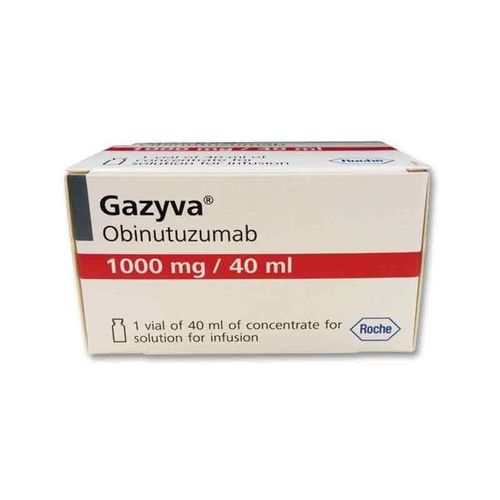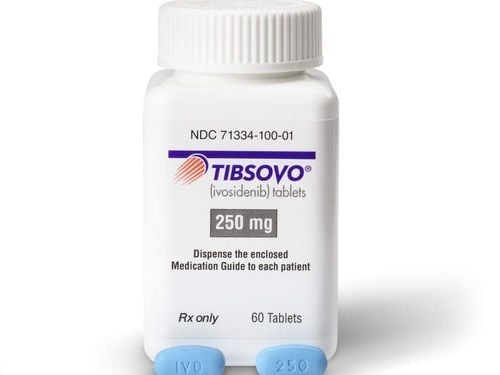This is an automatically translated article.
Currently, cancer is a disease that tends to develop in many countries, in which acute leukemia is a blood cancer or leukemia is quite common. Acute leukemia is caused by many different causes and prevention is still difficult.1. What is acute leukemia?
Leukemia (blood cancer) also known as white blood disease. This is the common name for a group of malignant blood diseases.
Acute leukemia (Acute blood cancer) is characterized by the proliferation of a type of immature blood cells in the bone marrow, called blast cells. The insatiable proliferation of blast cells in acute leukemia leads to two consequences:
Inhibition of the bone marrow's ability to produce red blood cells and platelets. Blast cells spill into the bloodstream and infiltrate organs.
2. Causes of acute leukemia
Scientists have not yet found the exact cause of acute leukemia. However, several risk factors have been identified that increase the likelihood of developing acute leukemia. These factors include:
Radiation: people exposed to radiation (such as atomic bomb victims, patients treated for certain diseases with radiation). Certain chemicals, such as benzene or chemotherapy drugs used in cancer treatment. Certain congenital diseases such as Down syndrome. Certain precancerous conditions, such as myelodysplastic syndromes. Some viruses such as HLLV-I can cause acute T-cell lymphoma.
3. Clinical symptoms of acute leukemia
Symptoms of acute leukemia vary, depending on the type of leukemia. Common leukemia signs and symptoms include:
3.1. Anemia syndrome
Patients are tired, dizzy when changing positions, even fainting. Pale skin, eye mucosa, oral mucosa (gingiva) pale. The palm of the hand is not pink. Nails are brittle, notched. Dry, frizzy hair. Heart beats fast. The above symptoms progressed quickly, the patient was difficult to adapt. Often no cause can be found for a proportionate blood loss.
3.2. Hemorrhagic syndrome
The patient bleeds spontaneously, not related to impact or trauma. Natural root bleeding. Subcutaneous haemorrhage manifests as bruises on the skin, can occur in any location, occurs naturally, no cause can be found. In severe cases, you may vomit blood, have bright red blood or black stools, and urinate with blood. The patient can die from blood loss if not treated promptly. Disseminated intravascular coagulation is a severe manifestation of the disease, which can cause vascular occlusion.
3.3. Infection syndrome
The patient has a long, high fever. Occurrence of mouth ulcers, throat, skin infections. Maybe even necrosis. Pneumonia. In severe cases, the patient can die quickly from sepsis.
3.4. Infiltrative syndrome
Caused by malignant cells spilling into the blood and infiltrating organs. Liver, spleen, lymph nodes are enlarged and firm. Patients can palpate lymph nodes, enlarged liver. Infiltrating gums causes enlarged gums, skin infiltration causes subcutaneous tumors. Central nervous system infiltrates causing headaches, paralysis... are severe manifestations of the disease.
3.5. Symptoms of malignancy
Patients with high fever, prolonged, may not find the cause of infection. Skinny lose weight fast without cause. The patient is depressed and tired.
4. Diagnosis of acute leukemia
Usually, patients with acute leukemia already present with many of the clinical symptoms described above when they arrive at the hospital. The doctor will examine the patient to detect the typical symptoms of acute leukemia such as liver, spleen, enlarged lymph nodes, anemia, infection, and bleeding.
Patients should have peripheral blood tests to count white blood cells (usually elevated in acute leukemia), platelet counts and hemoglobin levels (usually decreased in acute leukemia), and detection of leukemia cells in peripheral blood.
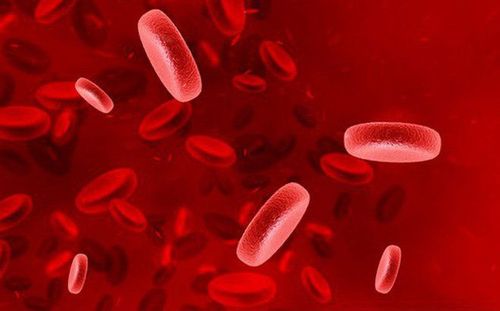
Xét nghiệm tế bào máu ngoại vi
Patients should also have a bone marrow test (myelogram or biopsy) to confirm the diagnosis and classify the disease.
Immunoassay by flow cytometry is also essential to aid in disease classification.
The pathological chromosomal and genetic tests that are common in acute leukemia are also performed to detect abnormalities of prognostic significance in order to select a treatment for the patient.
In addition, to detect complications such as pneumonia, blood infection or leukemia cell infiltration into the central nervous system, the doctor may perform other necessary tests such as ultrasound, X-ray. cardiopulmonary bypass, CT scan, lumbar puncture ...
5. Treatment of acute leukemia
Acute leukemia, especially acute myeloid leukemia, progresses very quickly and presents many serious complications, so it needs to be treated early and aggressively. The main treatment options include:
Chemotherapy: using anti-cancer drugs to kill leukemia cells to achieve remission for the patient. In acute leukemia, doctors often use multi-chemotherapy, which is a combination of many chemotherapy drugs with different mechanisms of action to achieve the maximum effect of killing leukemia cells. Chemotherapy can be given by mouth, by intravenous infusion (via a needle or central venous catheter) or by injection directly into the spinal cord to kill leukemia cells that have infiltrated the central nervous system.
Transplantation of hematopoietic stem cells from an allogeneic donor from bone marrow, peripheral blood or umbilical cord blood stem cells, helps patients with acute leukemia have the opportunity to be cured or have long-term remission. A stem cell transplant is a procedure to replace diseased bone marrow with healthy bone marrow. Before a stem cell transplant, the patient will receive high doses of chemotherapy or radiation to destroy the diseased bone marrow. The patient is then given hematopoietic stem cells to help rebuild the bone marrow.
Targeted therapy: using drugs that specifically target abnormal proteins that cause leukemia cells to proliferate massively and fail to differentiate and mature. For example, the drug imatinib (Gleevec) blocks the action of a protein in the leukemia cells of people with chronic myeloid leukemia, helping to control the disease. Targeted treatment helps prevent leukemia cells from reproducing as much as possible, while doing little harm to normal blood cells.
Vinmec Research Institute of Stem Cells and Gene Technology under Vinmec International General Hospital was born with the aim of:
Developing gene/cell-based medical therapies to treat incurable diseases Products production of stem cell (off-the-self) medicinal preparations Development and testing of stem cell technologies Research the cellular and molecular mechanisms that control tissue regeneration and close immune regulation decisive role in the effectiveness of developed and developing therapies Establish a GMP standard laboratory system for the production of stem cells and immune cells. Customers can directly go to Vinmec Health system nationwide to visit or contact the hotline here for support.
SEE MORE:
Development of CAR-T cell therapy technology to treat all types of blood cancer Diagnosis of acute leukemia (blood cancer) Therapy “Strengthening autologous immune system”: New hope for cancer patients




